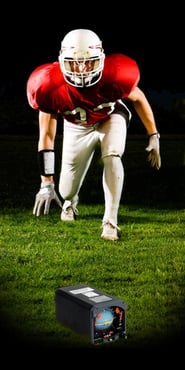 No one in the aviation industry likes to see an instrument or piece of avionics equipment labeled as No Fault Found (NFF). So Duncan Aviation technicians take great care to tackle these head-on to find faults.
No one in the aviation industry likes to see an instrument or piece of avionics equipment labeled as No Fault Found (NFF). So Duncan Aviation technicians take great care to tackle these head-on to find faults.
Equipment is labeled NFF when the squawk it is sent in for cannot be duplicated in the repair bench environment. Additionally, many problems with avionics equipment and instruments are intermittent; the equipment doesn’t fail outright, it just periodically stops performing as needed. That makes diagnosis even more difficult.
Brian Leffers, Manager of the Duncan Aviation Avionics/Instrument shop, estimates that between 10-25% of the components that Duncan Aviation receives are labeled NFF from a different shop.
So just how does Duncan Aviation tackle these diagnostic dilemmas?
EXPERIENCE SAVES MONEY
There are hundreds of years’ worth of experience among the technicians working on gyros, weather radar, antennas, autopilot equipment, and navigation/communications systems sent to Duncan Aviation. Brian believes that this experience is the main reason Duncan Aviation is known for its ability to resolve NFF problems.
Because Duncan Aviation technicians are assigned to dedicated stations and work all day, every day, on the same types of components and instruments, they become familiar with even the most uncommon problems and failures.
Randy Bauer has worked at Duncan Aviation for 28 years. As a Gyro Master Tech, Randy explains that a faulty gyro could cause wing rock. However, determining what’s wrong in a gyro isn’t that easy. “In the vertical gyro, wing rock may be caused by defective gimbal bearings, low liquid level, or free drift rates. And in rare instances, the directional gyro could cause the same wing rock discrepancy if it has defective gimbal bearings or if the free drift rates don’t conform to specifications.”
Instrument Master Technician Steve Joe, who has 30 years of experience, specializes in repair and overhaul of attitude indicators. Some of these indicators have a new replacement cost of up to $40,000, so repair is preferred. The motors used to drive the attitude and command displays in some attitude director indicator models have intermittent failures. If the motor fails just once every 300 cycles, that would prevent it from being acceptable for continued service. These parts are carefully inspected to minimize the chance of in-flight failures.
ENVIRONMENTAL TESTING
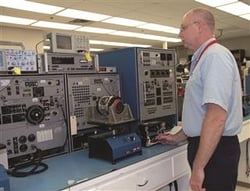 Duncan Aviation’s Avionics and Instrument Shop uses chambers that simulate the temperature extremes equipment experiences in flight. For instance, a weather radar antenna in an aircraft’s nose cone may experience 100-degree temperature swings from ground to altitude. To duplicate and diagnose problems, Duncan’s chamber can re-create those extremes (-40C to +70C).
Duncan Aviation’s Avionics and Instrument Shop uses chambers that simulate the temperature extremes equipment experiences in flight. For instance, a weather radar antenna in an aircraft’s nose cone may experience 100-degree temperature swings from ground to altitude. To duplicate and diagnose problems, Duncan’s chamber can re-create those extremes (-40C to +70C).
Randy explains that all gyros are subjected to temperature extremes: They go through a hot (oven: 200 degrees) and cold (freezer: 20 degrees) soak to simulate the real-life temperatures the gyro may experience during flight or on the ground.
In addition, the shop houses an altitude chamber to simulate the changes in altitude and pressure that equipment undergoes during flight. And a vibration simulation re-creates the shaking and shuddering of an aircraft under various flight conditions.
STATE-OF-THE-ART DIAGNOSTIC EQUIPMENT
Duncan Aviation also invests in the most current tooling and repair manuals. When Team Leader Barry Burkey works on autopilot instruments, he uses a Duncan-developed automated test set called Date-1B. Instead of spending eight hours standing and monitoring the diagnostic test on a faulty autopilot, he hooks the unit to a computer for testing. While the tests are running, he’s free to work on other units.
Developed by Duncan Aviation’s Research & Development experts, the test set performs diagnostics and produces an analysis that Barry and his team use to pinpoint the problem. A major benefit of this automation is that it allows technicians to repeat lengthy tests many times in an attempt to duplicate intermittent problems that would normally take days to find, making this not only more cost effective but creating a higher probability that the fault will be identified.
NARROW THE FIELD
Duncan Aviation also has four Avionics/Instrument Tech Reps who provide support for the Avionics/Instrument shop by speaking directly to customers troubleshooting problems. Brian says, “Parts may arrive with a tag that says, ‘broken’ or ‘doesn’t work’.” From that brief assessment, it’s very difficult for a technician to discern what’s wrong. Tech reps call the customer and talk through the problems he or she has been experiencing to help pinpoint the source of the malfunction.
“Sometimes,” Brian says, “we have a unit here to work on. But after talking with the customer, our techs realize that unit may not be the source of the problem. So troubleshooting with the customer is an important step that helps ensure the customer doesn’t waste money sending in the wrong boxes.”
Randy agrees. “If an aircraft is experiencing wing rock, we might suspect a faulty gyro. However, it might also result from the autopilot sending a faulty signal to the servo. If the customer simply sends in the gyro and says the problem was wing rock, we could work on that gyro for months and never diagnose a problem.”
UP TO THE CHALLENGE
Locating the true nature of problems with avionics and instrument equipment is not always easy. The technicians at Duncan Aviation go to great lengths using experience, knowledge, environmental and diagnostic testing equipment and sheer determination to find solutions to components problems and save customers time, money and frustration.


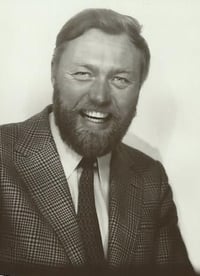 Captain Per Alkaersig
Captain Per Alkaersig 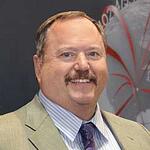 Join Gary Harpster, Duncan Aviation's Avionics Installation Sales Rep, to get the answers to these questions and more during an upcoming webinar geared toward business and general aviation operators.
Join Gary Harpster, Duncan Aviation's Avionics Installation Sales Rep, to get the answers to these questions and more during an upcoming webinar geared toward business and general aviation operators. 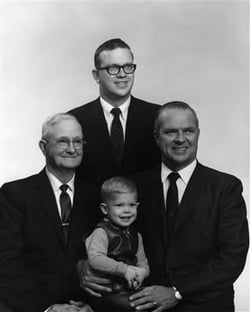 Innovation is vital to continued viability in business. The ability to innovate is the ability to provide continually improving services and, ultimately, more value to our customers.
Innovation is vital to continued viability in business. The ability to innovate is the ability to provide continually improving services and, ultimately, more value to our customers.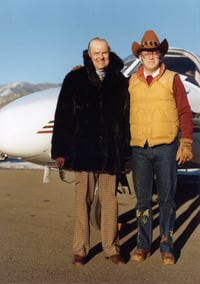 As mentioned in
As mentioned in 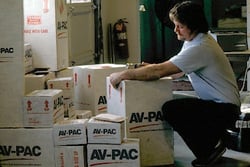 “I've had the opportunity to work with all four generations. Donald in the early days, then Robert, and now Todd and his sons,” says Project Manager Howard Nitzel. “Robert always had good people to run the day-to-day operations for him. He would be looking at the future, always four or five years out, and willing to try new things. AVPAC is a classic example—a parts support services. It was kind of a pipe dream, and it really took off into a whole industry. Robert was a true visionary, made the company grow, and took care of everyone and their families. He’s a true businessman in every sense of the word.”
“I've had the opportunity to work with all four generations. Donald in the early days, then Robert, and now Todd and his sons,” says Project Manager Howard Nitzel. “Robert always had good people to run the day-to-day operations for him. He would be looking at the future, always four or five years out, and willing to try new things. AVPAC is a classic example—a parts support services. It was kind of a pipe dream, and it really took off into a whole industry. Robert was a true visionary, made the company grow, and took care of everyone and their families. He’s a true businessman in every sense of the word.”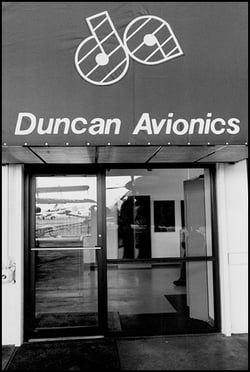 One of Duncan Aviation’s greatest assets has always been its employees. Robert knew there were talented, experienced, knowledgeable technicians in Lincoln, hundreds if not thousands of miles away from where the avionics were that needed servicing.
One of Duncan Aviation’s greatest assets has always been its employees. Robert knew there were talented, experienced, knowledgeable technicians in Lincoln, hundreds if not thousands of miles away from where the avionics were that needed servicing.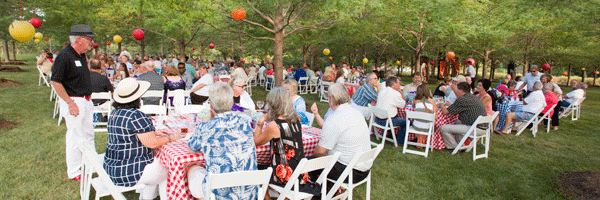 Those employees say the same thing about Robert Duncan and Duncan Aviation
Those employees say the same thing about Robert Duncan and Duncan Aviation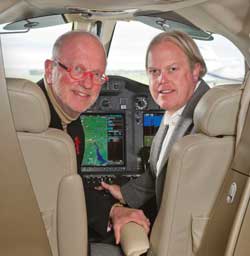 Todd has been Chairman of Duncan Aviation since 2007, and he’s seen the company ride the waves, the highs and lows, of the business aviation industry.
Todd has been Chairman of Duncan Aviation since 2007, and he’s seen the company ride the waves, the highs and lows, of the business aviation industry.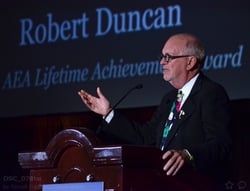 Yesterday, at the annual AEA convention in Orlando, Florida, Robert was given a life-time achievement award, recognizing his contributions to the aviation industry and acknowledging everything he’s done at Duncan Aviation in the last 60 years.
Yesterday, at the annual AEA convention in Orlando, Florida, Robert was given a life-time achievement award, recognizing his contributions to the aviation industry and acknowledging everything he’s done at Duncan Aviation in the last 60 years.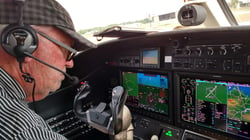 Robert’s father, Donald Duncan, founded Duncan Aviation in 1956 and this year, Duncan Aviation celebrates 60 years since that story began.
Robert’s father, Donald Duncan, founded Duncan Aviation in 1956 and this year, Duncan Aviation celebrates 60 years since that story began.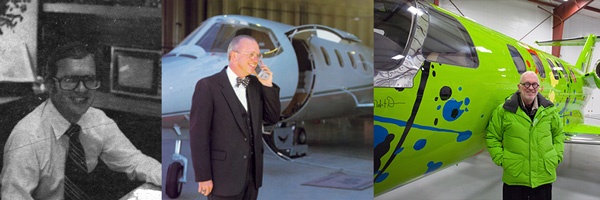
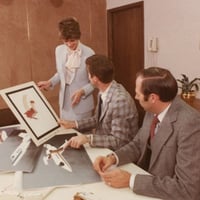 “I had been working for Learjet when my 47-year-old father had a heart attack, so I decided to accept the Duncan Aviation job offer and move back to Nebraska,” says Jeannine. “I gave my notice and said I was going to work for Duncan Aviation. People at Learjet took me aside and tried to talk me out of it. This was shortly after Donald had died, and they didn’t think the company would survive. They underestimated Robert and his entrepreneurial talent. He’s smart, open to new ideas, and willing to take risks. I’ve never regretted my decision to work for Robert.”
“I had been working for Learjet when my 47-year-old father had a heart attack, so I decided to accept the Duncan Aviation job offer and move back to Nebraska,” says Jeannine. “I gave my notice and said I was going to work for Duncan Aviation. People at Learjet took me aside and tried to talk me out of it. This was shortly after Donald had died, and they didn’t think the company would survive. They underestimated Robert and his entrepreneurial talent. He’s smart, open to new ideas, and willing to take risks. I’ve never regretted my decision to work for Robert.” That screwdriver that mysteriously went missing from the toolbox, a scrap of wire or a pack of Lifesavers might not look threatening. But as any A&P Tech will tell you, anything that’s somewhere it doesn’t belong sets the stage for a potentially dangerous situation. Such objects are known as FOD, and Duncan Aviation’s technicians are finding more of them more frequently.
That screwdriver that mysteriously went missing from the toolbox, a scrap of wire or a pack of Lifesavers might not look threatening. But as any A&P Tech will tell you, anything that’s somewhere it doesn’t belong sets the stage for a potentially dangerous situation. Such objects are known as FOD, and Duncan Aviation’s technicians are finding more of them more frequently.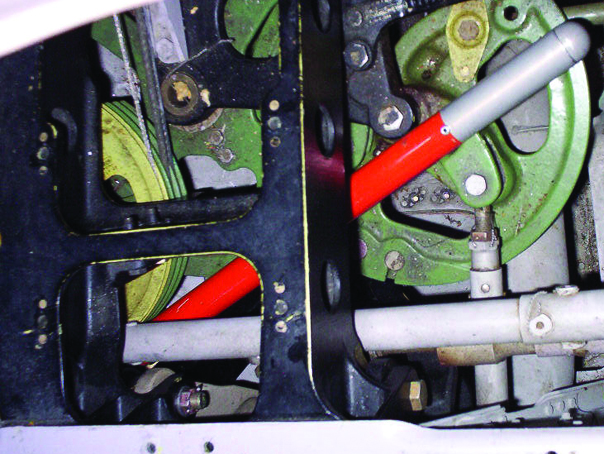 Duncan Aviation's technicians found this red Auxiliary Gear Handle (which belongs to the aircraft) sitting on top of the flight control pulleys.
Duncan Aviation's technicians found this red Auxiliary Gear Handle (which belongs to the aircraft) sitting on top of the flight control pulleys.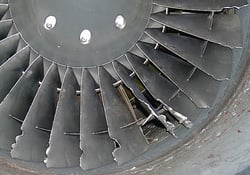
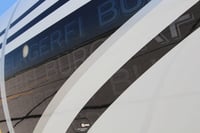
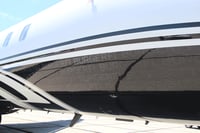
 Established in 1986, the Fort Lauderdale shop has always been located in space rented from and shared with other businesses. As those businesses grew and expanded, the Duncan Aviation shop would have to relocate. Earlier this year, Satellite Operations Manager Matt Nelson and Manager of the Fort Lauderdale shop Brian Redondo realized it would be beneficial for customers if the satellite stopped bouncing around and set up shop in its own hangar.
Established in 1986, the Fort Lauderdale shop has always been located in space rented from and shared with other businesses. As those businesses grew and expanded, the Duncan Aviation shop would have to relocate. Earlier this year, Satellite Operations Manager Matt Nelson and Manager of the Fort Lauderdale shop Brian Redondo realized it would be beneficial for customers if the satellite stopped bouncing around and set up shop in its own hangar.
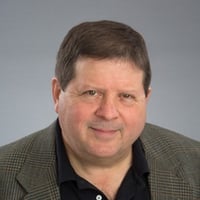 In 1978, Phil Porter was hired as Duncan Aviation’s first logistics manager; although, at the time, he was called a parts runner. Nearing the completion of his fourth decade at Duncan Aviation, Phil took some time to reflect on his long tenure with the company.
In 1978, Phil Porter was hired as Duncan Aviation’s first logistics manager; although, at the time, he was called a parts runner. Nearing the completion of his fourth decade at Duncan Aviation, Phil took some time to reflect on his long tenure with the company.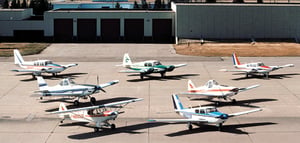 When Duncan Aviation won the exclusive rights as master distributor for Piper (including Aztecs and Cubs) parts, Duncan Aviation began regularly shipping parts worldwide.
When Duncan Aviation won the exclusive rights as master distributor for Piper (including Aztecs and Cubs) parts, Duncan Aviation began regularly shipping parts worldwide.